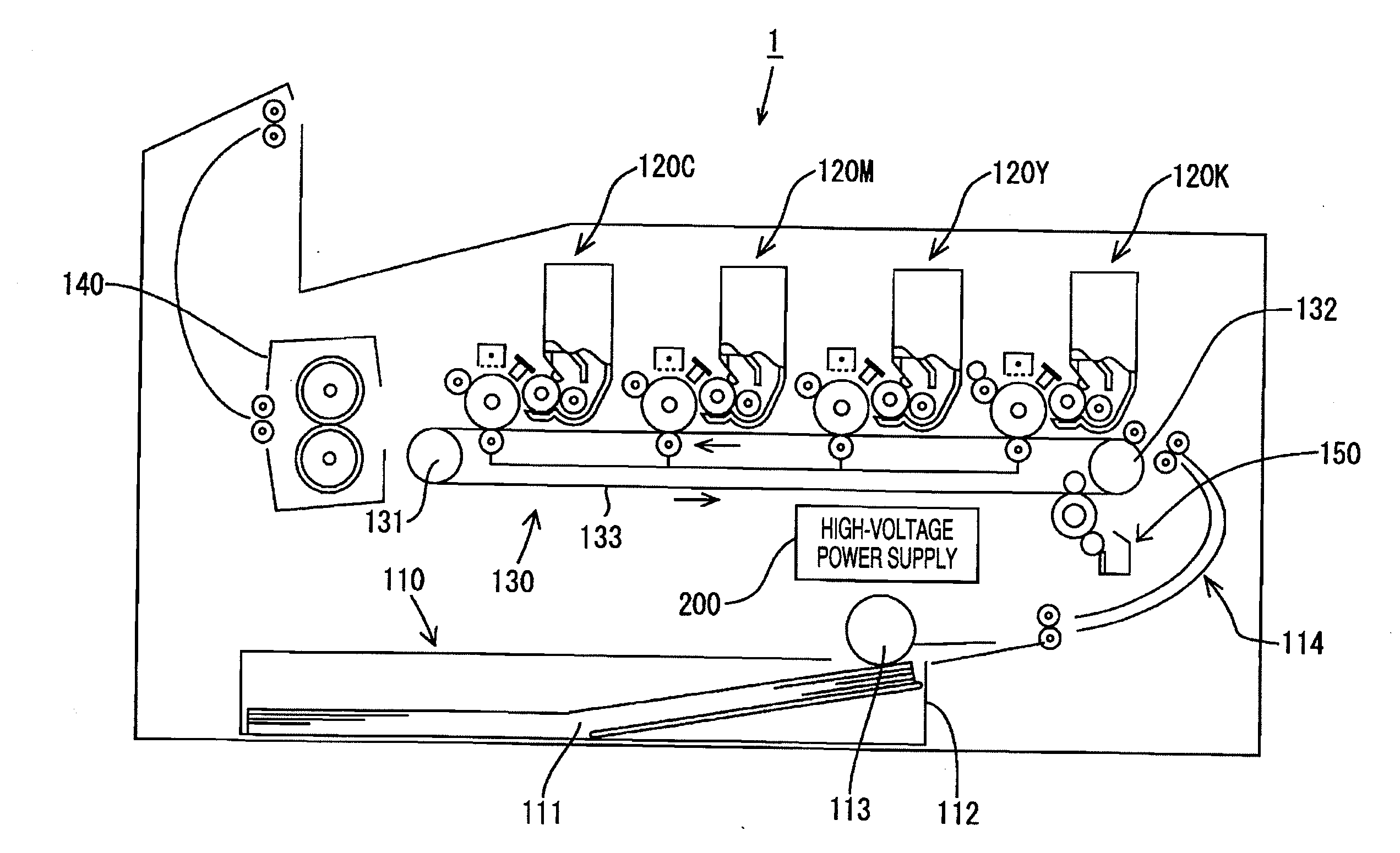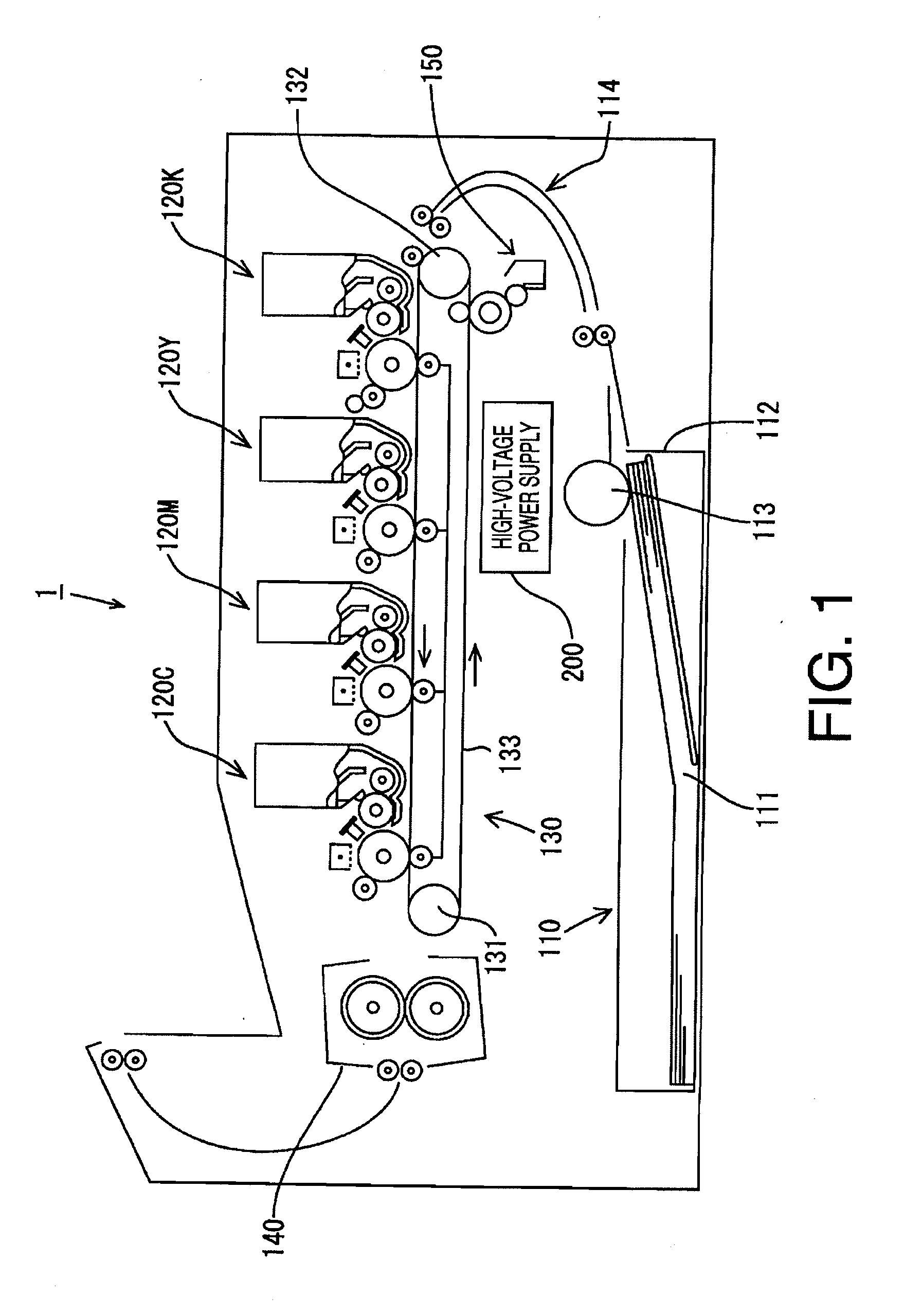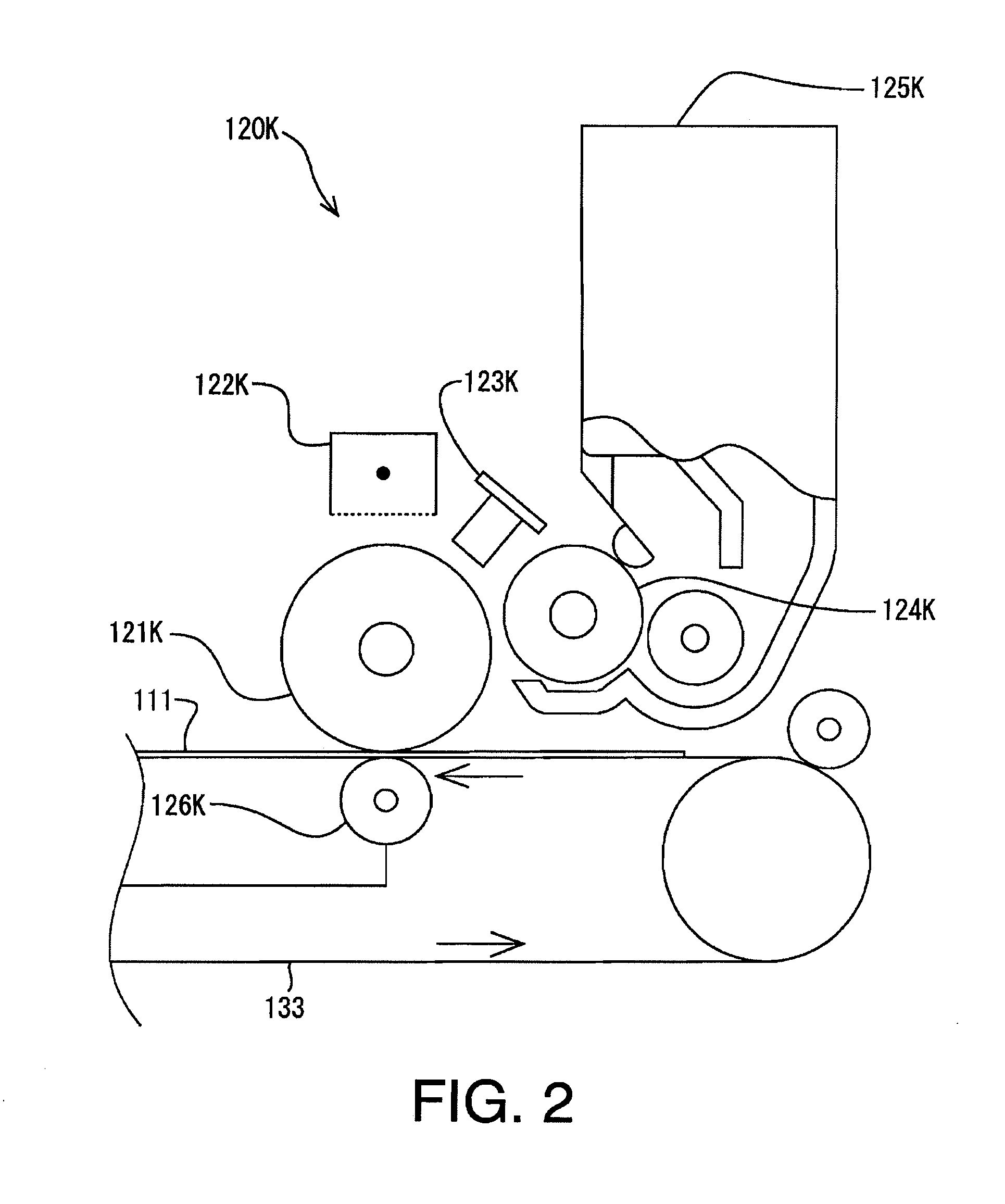Image formation device and image formation method
a technology of image formation device and image, which is applied in the direction of electrographic process apparatus, instruments, corona discharge, etc., can solve the problems of full-path dielectric breakdown, easy deterioration of the charging function of the charging unit for electrically charging a photosensitive body (e.g. photosensitive drum), and inability to prevent spark discharg
- Summary
- Abstract
- Description
- Claims
- Application Information
AI Technical Summary
Problems solved by technology
Method used
Image
Examples
first embodiment
[0038]FIG. 3 shows the configuration of a charging mechanism and a power supply in accordance with the present invention. The charging process (for the photosensitive drum 121K) is carried out by the charging unit 122K by electrically charging the surface of the photosensitive drum 121K (see FIG. 2) up to a positive electric potential (e.g. +700 V). The charging unit 122K includes a casing 122Kc, a charging wire 122Kw and a grid 122Kg which is placed at an opening of the casing 122Kc. The photosensitive drum 121K is frame-grounded (unshown) to a ground line (reference potential) of the printer 1.
[0039]The power supply (part of the high-voltage power supply 200 for supplying electric power to the charging unit 122K) includes a control circuit board 210 and a charging voltage generating circuit 220. The charging voltage generating circuit 220 is equipped with a PWM signal control circuit 221, a driving circuit 222, a booster circuit 223, a high voltage detecting circuit 224 and a grid...
second embodiment
[0076]The control system of the second embodiment includes a wire control unit 310a which controls the electric potential and electric current of the charging wire 122Kw and a grid control unit 310b which controls the grid potential. The wire control unit 310a and the grid control unit 310b are capable of executing the control independently of each other.
[0077]The wire control unit 310a is capable of executing the control in two control modes: a wire constant-current control mode and a wire constant-potential control mode. The wire constant-current control mode is the default control mode (initial setting). The wire constant-potential control mode is a control mode that is used when the electric potential of the charging wire 122Kw has exceeded a prescribed threshold value (e.g. 7 kV) due to contamination, etc. of the charging wire 122Kw. Whether the electric potential of the charging wire 122Kw has exceeded the threshold value or not is detected by a wire potential measuring unit 3...
third embodiment
[0110] described hereinafter, when the high-voltage power supply 200 is powered on, a delay of a rising period (i.e., a time period in which the grid current etc. reaches target values) is suppressed, while the spark discharge is well suppressed.
[0111]Hereinafter, the charging voltage control process according to the third embodiment, which is a modification of the first embodiment, will be described with reference to a flowchart shown in FIG. 11 and a chart shown in FIG. 12.
[0112]The charging voltage control process is initiated by the control unit 310 (on the control substrate 210) when the high-voltage power supply 200 is activated. Specifically, when the printer 1 is powered on, when an image formation request is input through the operation unit of the printer 1 or from an external device, or when the operational status of the printer 1 is changed from a power save mode to a normal operation mode, the bight-voltage power supply 200 is activated.
[0113]The control unit 310 control...
PUM
 Login to View More
Login to View More Abstract
Description
Claims
Application Information
 Login to View More
Login to View More - R&D
- Intellectual Property
- Life Sciences
- Materials
- Tech Scout
- Unparalleled Data Quality
- Higher Quality Content
- 60% Fewer Hallucinations
Browse by: Latest US Patents, China's latest patents, Technical Efficacy Thesaurus, Application Domain, Technology Topic, Popular Technical Reports.
© 2025 PatSnap. All rights reserved.Legal|Privacy policy|Modern Slavery Act Transparency Statement|Sitemap|About US| Contact US: help@patsnap.com



